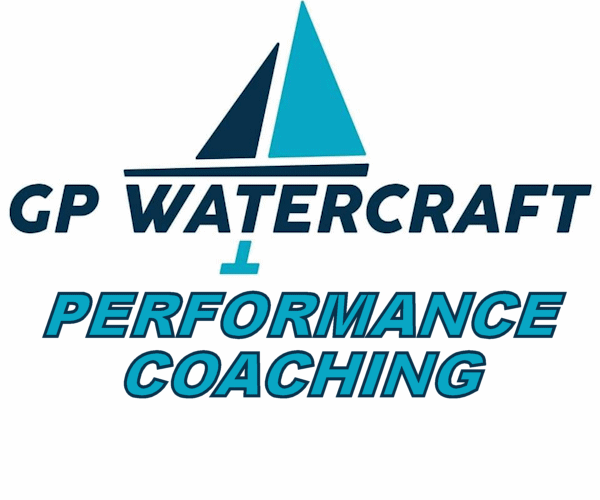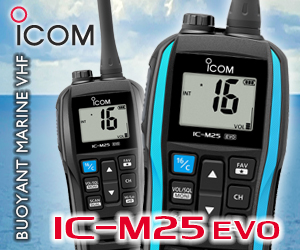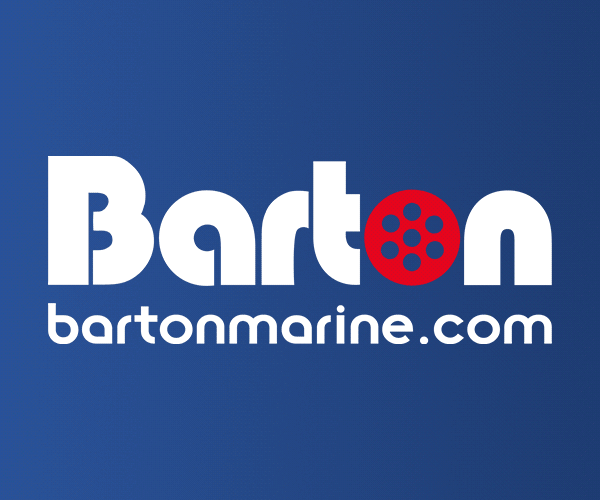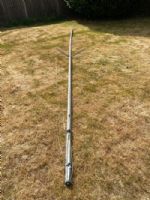












| Rossiter Pintail Mortagne sur Gironde, near Bordeaux |
 |
| Free mast for Merlin Rocket - has a bend! Guildford |
 |
List classes of boat for sale |
What does mast rake do? |
Post Reply 
|
Page 123 4> |
| Author | ||
Ch505 
Newbie 
Joined: 06 Mar 07 Online Status: Offline Posts: 11 |
 Post Options Post Options
 Quote Quote  Reply Reply
 Topic: What does mast rake do? Topic: What does mast rake do?Posted: 15 May 07 at 12:10pm |
|
|
So, from a 505 perspective (suspect that many other classes will have a different approach) you are essentially attempting to keep the sailshape the same in most conditions. There are 3 zones. below 8 knots; below 12 knots; and above 8/9 knots - 12/13 knots or thereabouts is your fully powered sector. Rig fully upright; max power, no frills. Less than 8 knots (as the crew comes off the trapeze, and the wind gets a bit holier) you need to replace the mast bend....so more shrouds, and less strut. Less than 4 knots - the only time when you are seeking to distort the sailshape. Loads of shrouds - 420lbs - and destrut (upwards) to bend the mast, and make an easier shape for the wind to stick to. --- And upwards from 13 knots: Steadily rake backwards to depower, following the rake with increasing amounts of strut (down). If you don't pull enough strut down, you will allow the middle of the rig to "pant", which unbalances the rig, and makes the hull feel twitchy in the water. In extreme conditions, fully nail the kicker down (we last broke a boom on Lake garda in no waves...!!) to bend the top mast, and flatten the rig....or blade out the trailing edge of the mainsail. There are other subtleties (jib cars, flatners, cunningham, jib cunningham, centreboard etc) and obviously wave state plays a large role in deciding which gear to step into. However, rake in this class depowers..! Chas
|
||
|
Charlie
|
||
 |
||
radial179102 
Posting king 
Joined: 28 Mar 05 Location: Wales Online Status: Offline Posts: 198 |
 Post Options Post Options
 Quote Quote  Reply Reply
 Posted: 15 May 07 at 8:05am Posted: 15 May 07 at 8:05am |
|
Story of my life! Damn estuaries...  |
||

Villan is my Bitch ;) |
||
 |
||
Silverlode 
Newbie 
Joined: 30 May 06 Location: United Kingdom Online Status: Offline Posts: 14 |
 Post Options Post Options
 Quote Quote  Reply Reply
 Posted: 14 May 07 at 10:56pm Posted: 14 May 07 at 10:56pm |
|
|
My theory for what its worth, based on adjusting rig on a Scorpion. We rake the mast to depower as it gets windier. This changes lots of the geometry. Kicker tension will change unless adjusted to compensate. Jib sheeting angle changes opening the jib leach, unless jib fairleads are moved forward to compensate. It isn't just the sheet tension but the angle that matters. Probably alters the gust response as the jib leach twists open more in the gusts instead of backwinding the main, which I am probably trying to spill. Lots of cunningham in the gusts to flatten main and encourage it to blade at the top. Adjust centreboard angle to rebalance the helm as the centre of effort of the rig moves aft.
|
||
|
Scorpion 1995
|
||
 |
||
mike ellis 
Really should get out more 
Joined: 30 Dec 05 Location: United Kingdom Online Status: Offline Posts: 2339 |
 Post Options Post Options
 Quote Quote  Reply Reply
 Posted: 13 May 07 at 4:02pm Posted: 13 May 07 at 4:02pm |
|
|
really low windspeed=near as dammit nothing? because if thats the case im going backwards anyway because of the tide. |
||
|
600 732, will call it Sticks and Stones when i get round to it.
Also International 14, 1318 |
||
 |
||
redback 
Really should get out more 

Joined: 16 Mar 04 Location: Tunbridge Wells Online Status: Offline Posts: 1502 |
 Post Options Post Options
 Quote Quote  Reply Reply
 Posted: 12 May 07 at 10:29pm Posted: 12 May 07 at 10:29pm |
|
|
Just trying this from my phone so apologize if it looks a mess. Dennis you are right at all normal windspeeds but according to the research at extremely low speeds the viscosity of the air becomes a factor and low camber is better - but not flat.
|
||
 |
||
giraffe 
Posting king 
Joined: 10 May 07 Online Status: Offline Posts: 148 |
 Post Options Post Options
 Quote Quote  Reply Reply
 Posted: 12 May 07 at 7:55pm Posted: 12 May 07 at 7:55pm |
|
|
you have got it sorted. substantial differences between types of rig means that most of the above rake comments could easily be misinterpreted and applied to the wrong boat. similarly you might want to flatten your sails in light winds as your sails are very full (eg you have an unstayed rig eg Europe/OK) and the wind will not have enough energy to get around a full sail. you need to make the original question more class or at least type of rig generic as this will be key to understanding. Best of all discuss with your sailmaker. I realise that if you have SMOD sails made in the Philippines or similar this is a useless piece of advice but if that is the case it probably means you just have to look at what the fastest people in the Class do / ask them as you can surely have no alternative but to do the same.
|
||
 |
||
radial179102 
Posting king 
Joined: 28 Mar 05 Location: Wales Online Status: Offline Posts: 198 |
 Post Options Post Options
 Quote Quote  Reply Reply
 Posted: 12 May 07 at 6:59pm Posted: 12 May 07 at 6:59pm |
|
|
Depends entirely on the boat. For example, the Europes boom is on the deck all the time up wind, so raking the mast back opens the leech and spills wind, raking it forwards makes the leech very tight and helps pointing.
|
||

Villan is my Bitch ;) |
||
 |
||
49erGBR735HSC 
Really should get out more 

Joined: 30 Mar 05 Location: United Kingdom Online Status: Offline Posts: 1991 |
 Post Options Post Options
 Quote Quote  Reply Reply
 Posted: 11 May 07 at 12:24pm Posted: 11 May 07 at 12:24pm |
|
|
Sorry, I tend to disagree, the flat sails stall quicker as the flow de-attaches quicker where as with the curved sail, the flow will follow the shape of the sail better. 1/10th camber seems the optimum setting according to some texts for light conditions. 1/20th camber produces less lift according to research but has a relatively similar drag profile, indicating that you get less lift for comparible drag. 1/7th camber, a fuller profile than 1/10th sees more lift but also has the penalty of more drag. If you put a flat plate into a wind tunnel, it stalls quite rapidly, the curved foil maintains a lift profile quite convincingly in comparison. Increasing the flow of wind through the tunnel, ie increasing wind speed helps at higher speeds to maintain a flow over the flatter sections, so flat sails don't help at all in light winds, has the same effect as oversheeting the main in essence. (Camber is the ratio of sail length to depth) |
||
 |
||
dopamine 
Groupie 
Joined: 26 Oct 06 Location: Burkina Faso Online Status: Offline Posts: 68 |
 Post Options Post Options
 Quote Quote  Reply Reply
 Posted: 11 May 07 at 8:13am Posted: 11 May 07 at 8:13am |
|
|
Good topic guys. Fascinating to see the different interpretations and opinions from experienced sailors. Reinforces my opinion that every setting has a drawback (or two...or three......). Actually, reading this is very helpful if you are struggling, like me, to understand and come to terms with the basic principles involved. There are plenty of us who are a long way from reading and understanding advanced level sailing literature!
|
||
 |
||
Stefan Lloyd 
Really should get out more 
Joined: 03 Aug 04 Online Status: Offline Posts: 1599 |
 Post Options Post Options
 Quote Quote  Reply Reply
 Posted: 11 May 07 at 5:21am Posted: 11 May 07 at 5:21am |
|
So you think opening the jib leech by easing the sheet stops you pointing but opening it by raking the mast doesn't. Why? Most classes do in fact ease the jib-sheet at some point as the breeze builds. Some keelboat classes have tuning guides telling you how far the leech should be off the spreaders and these typically call for the sheet to be eased slightly in stronger winds. Edited by Stefan Lloyd |
||
 |
||
Post Reply 
|
Page 123 4> |
| Forum Jump | Forum Permissions  You cannot post new topics in this forum You cannot reply to topics in this forum You cannot delete your posts in this forum You cannot edit your posts in this forum You cannot create polls in this forum You cannot vote in polls in this forum |
Copyright ©2001-2010 Web Wiz
Change your personal settings, or read our privacy policy












 Printable Version
Printable Version Delicious
Delicious Digg
Digg Facebook
Facebook Furl
Furl Google
Google MySpace
MySpace Newsvine
Newsvine reddit
reddit StumbleUpon
StumbleUpon Twitter
Twitter Windows Live
Windows Live Yahoo Bookmarks
Yahoo Bookmarks Topic Options
Topic Options